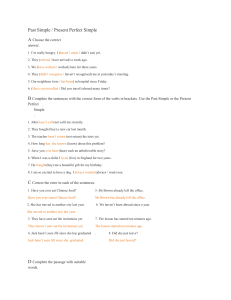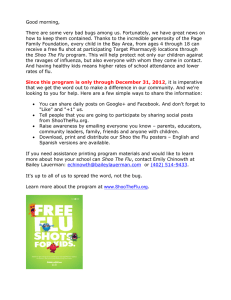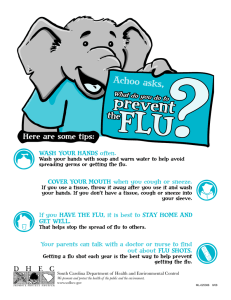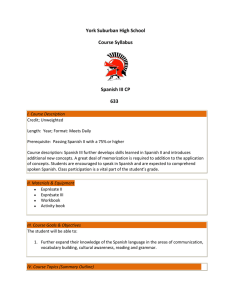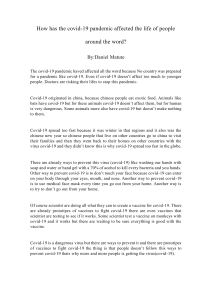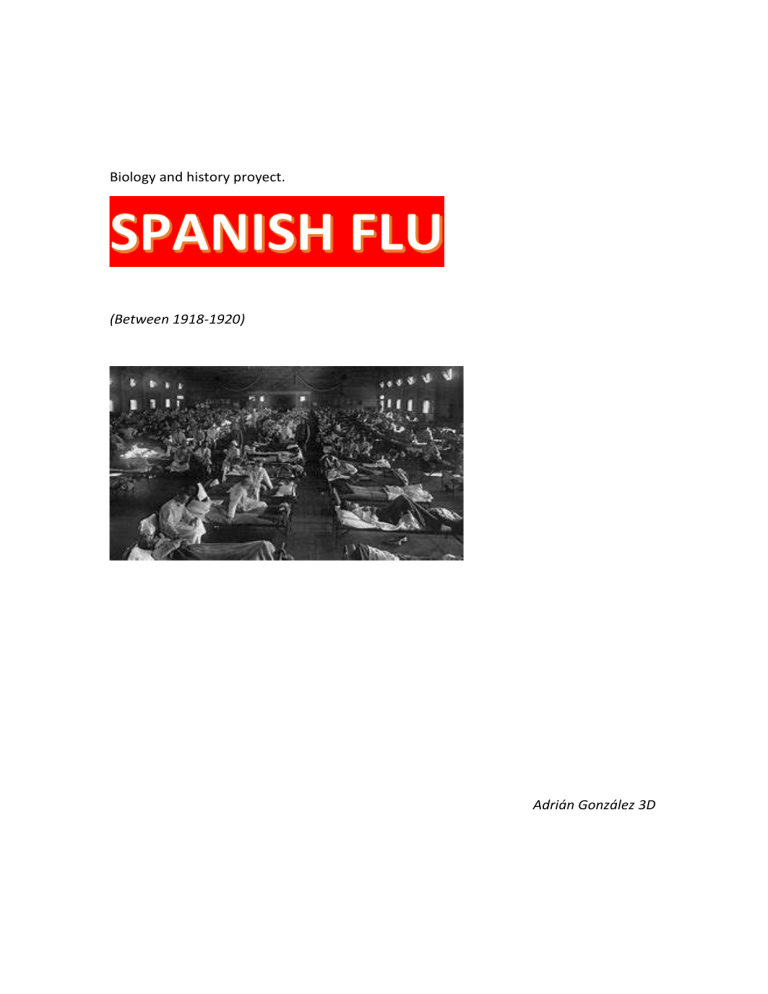
Biology and history proyect. (Between 1918-1920) Adrián González 3D Index - Introduction (page 3) - Investigate this desease and explain wich microorganism caused it, how it was transmitted, and wich preventive measures were taken at that time. (page 4,5,6 ) - Compare this pandemic to Covid-19. What similarities are there? (page 6) - Bibliography and webgraphy (page 7) What was the spanish flu? The Spanish flu pandemic of 1918 was the deadliest event in recorded history, it claimed the lives of approximately 20 to 50 million people. The disease first appeared in Asia, Europe and North America before moving across the world in only a few months. The virus spread through some 500 million people around the globe, over one third of the planet's population was infected. With no effective means available for treatment, the deadly flu virus spread fastly with no end in sight. People were forced to wear masks when out; businesses and schools were closed; and bodies piled up in makeshift morgues before the virus finally stopped its worldwide march of death. In the spring of 1918, a significant wave of the virus swept through the country. These sick patients typically presented flulike symptoms such as fever, nausea and fatigue. After several days, their symptoms usually subsided and few died. A second wave of influenza swept the nation with incredible strength in the fall of 1918. It quickly wiped out average life expectancies in America by a dozen years. Victims transformed into blue-skinned corpses within hours of first showing symptoms. Their lungs filled with fluid and they suffocated as a result. Investigation of spanish flu. - The Spanish flu, also known as the 1918 influenza pandemic, was one of the deadliest epidemics in recent history. The 1918 influenza pandemic was the first of two H1N1 influenza pandemics to hit the world. The Spanish flu infected more than 5 billion people on Earth, including those from remote Pacific islands. The 1918 influenza pandemic killed more than 50 million people. The Spanish flu killed more people in 24 weeks than HIV/AIDS in 24 years. In the first 25 weeks of the pandemic, more than 25 million victims died. The Spanish flu first appeared in the United States, Asia and Europe before spreading to the rest of the planet. People are being asked to wear masks as there is no effective vaccine and medicine to treat the Spanish flu. Allies in the First World War dubbed it the Spanish Flu, as the epidemic received more media attention after it spread to Spain. - The first wave of this pandemic occurred in the spring of 1918 and was mild. Patients had various symptoms, including fatigue, fever and chills, and most recovered within a few days. The death rate in the first wave was fairly low. The first wave resembles a normal flu epidemic, and the people most affected are the elderly and the sick. - When an infected person coughs or sneezes, viral particles are spread to those around them. Thus, massive troop movements and the approach of World War I accelerated the pandemic. World War I may have increased the lethality of the virus. Many speculate that soldiers' immune systems are weakened by malnutrition. In the United States, the Spanish flu was first detected in Kansas in January 1918. Albert Gitchell reportedly fell ill at Fort Riley on March 4, 1918.Within days, more than 522 men called in sick at Fort Riley. The H1N1 flu virus had already mutated by the time the second wave began in August in the United States, France and Sierra Leone. The deadliest month of the epidemic was October 1918. - The fact that most people who have recovered from the first wave have acquired immunity suggests that they are dealing with similar strains of the flu. This immunity takes the Danish capital as an example, with a mortality rate of about 0.29%. For the rest of the world, the second wave is deadlier. - Within days, more than 522 men called in sick at Fort Riley. The H1N1 flu virus had already mutated by the time the second wave began in August in the United States, France and Sierra Leone. The deadliest month of the epidemic was October 1918. - To avoid the spread of the Spanish flu virus, it was recommended to avoid crowded public places such as theaters or schools, so some cities were abandoned. Today the best way to prevent the flu is to get vaccinated every year, because the virus undergoes random mutations every year to survive. In addition to vaccines, there are antibiotics, introduced in 1928 and prescribed by doctors to prevent bacterial infections after the flu. - Also, during a flu or influence outbreak, it's important to avoid closed and crowded environments to reduce the spread of the virus to others. Comparation with Covid-19 I believe that the Spanish flu has some similarities such as that both have infected many people and have formed a pandemic. However, the two pandemics are separated by a century, in which many vaccines and many preventives have been created for viruses and people at that time did not have as many resources to protect themselves from the Spanish flu as we have today. The Spanish flu affected the population much more but I believe that if the Spanish flu happened today, so many people would not have been infected or so many people would have died because medicine is more developed at this time and also humans would have more experiences with pandemics and we would do much better. Bibliography Spanish Flu - Symptoms, How It Began & Ended - HISTORY What Was The Spanish Flu? - WorldAtlas Gripe Española: qué es, síntomas y tratamiento - Tua Saúde (tuasaude.com)

